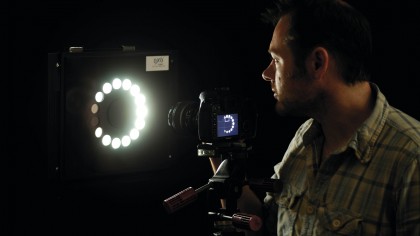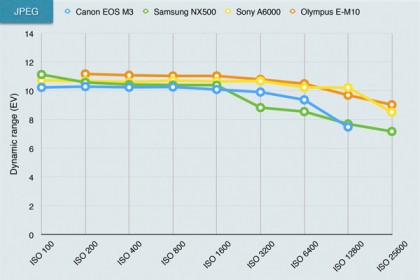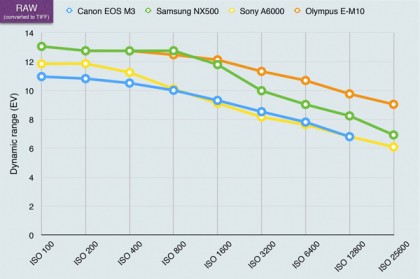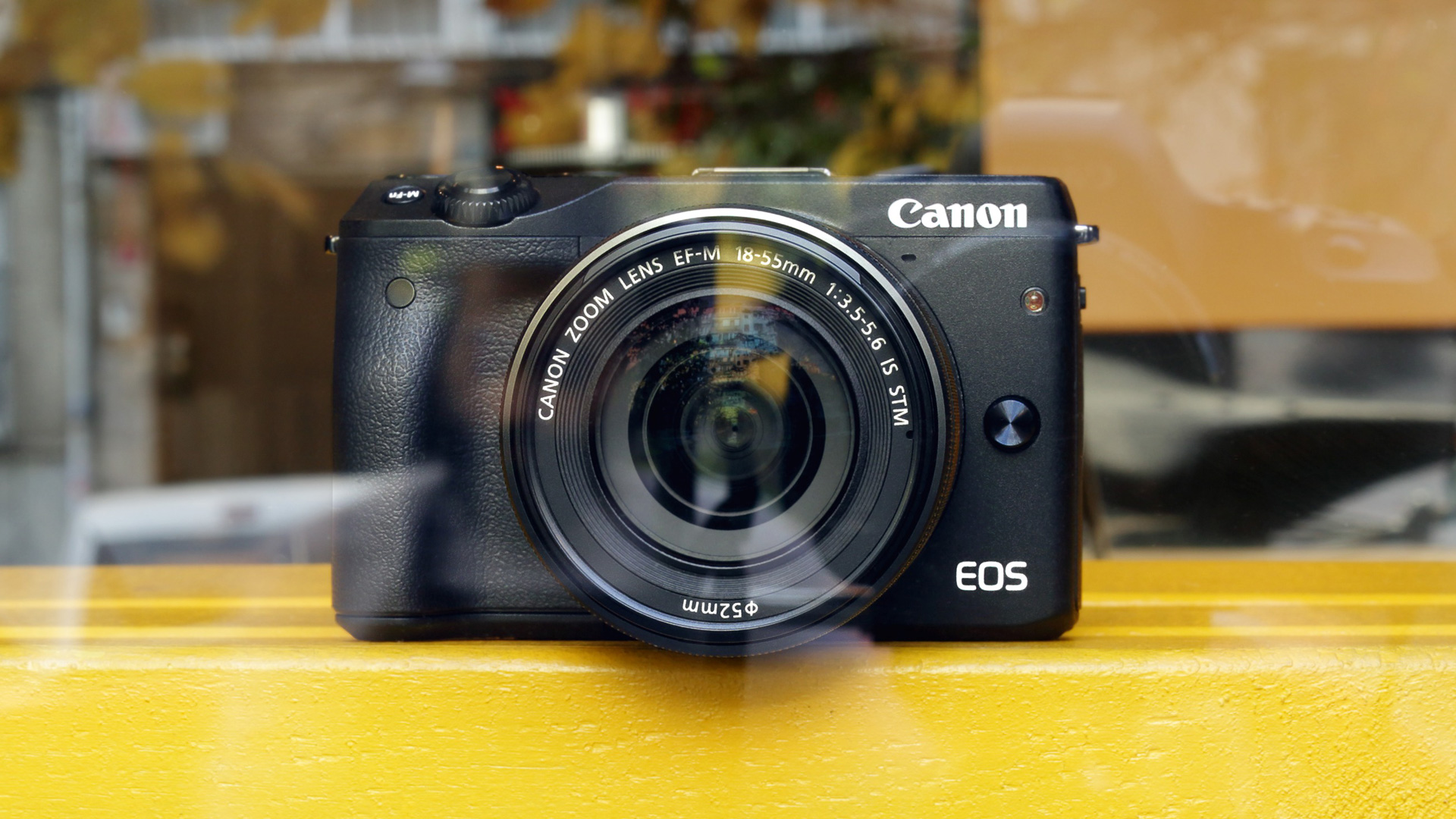Why you can trust TechRadar
Dynamic range is a measure of the range of tones the sensor can capture. Cameras with low dynamic range will often show 'blown' highlights or blocked-in shadows. This test is carried out in controlled conditions using DxO hardware and analysis tools.

Dynamic range is measured in exposure values (EV). The higher the number the wider the range of brightness levels the camera can capture. This falls off with increasing ISO settings because the camera is having to amplify a weaker signal. Raw files capture a higher dynamic range because the image data is unprocessed.
Canon EOS M3 dynamic range chart

JPEG dynamic range analysis: JPEG dynamic range is a feature of contrast and in the default Picture Style (Standard) the M3's images have pleasing contrast. Tonal gradation is also retained fairly well in the shadows and highlights. All four cameras are quite close when shooting JPEG images.

Raw dynamic range analysis: After conversion to TIFF, the M3's raw files have a slightly higher dynamic range than the JPEGs, but they don't hit quite the highs of the competing cameras. The results from the Sony A6000 are similar, but the Samsung NX500 and Olympus E-M10 deliver much better results.
Current page: Lab tests: Dynamic range
Prev Page Lab tests: Resolution Next Page Lab tests: Signal to noise ratio